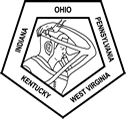<< Back to the abstract archive
Evaluating Barbed Suture Technique During Dermal Closure In Breast Reduction
Tobler W, Thadikonda KM, Nguyen V.
University of Pittsburgh Medical Center
2016-01-31
Presenter: William Tobler
Affidavit:
This project was conducted by a team consisting of william tobler (resident), mark thadikonda (student), and Dr.Nguyen (attending and assistant PD). The resident took the lead in the project.
Director Name: Joseph Losee
Author Category: Resident Plastic Surgery
Presentation Category: Clinical
Abstract Category: Breast (Aesthetic and Recon.)
Introduction: Surgical suture materials have evolved over time. Barbed sutures for wound closures have been shown to decrease operative time, however there is no study in the literature solely evaluating its use in reduction mammoplasty.
Methods: A retrospective review was performed on 70 consecutive female patients who underwent a bilateral breast reduction by the senior author (VTN) from 2007-2014. Initially, all wounds were closed with monofilament suture in 5 patients. This was followed by a change in practice to barbed suture; first utilizing Quill bidirectional sutures in 26 patients followed by V-lock unidirectional sutures in 39 patients. All outcomes were evaluated for time of surgery and complications profile during a 3-month follow-up period. Comparative analysis of postoperative complications was completed using Fisher's exact test, and closure time analyzed via t-test.
Results: Comparison of closure using monofilament suture versus barbed suture demonstrated a statistically significant decrease in time (133 min vs 165 min, P=0.01). Complications between the two groups including wound dehiscence, infection, and reoperation rates were not significantly different.
Conclusion: Results from this analysis demonstrate that operative time may be less with the use of barbed suture when compared to monofilament suture closure. Additional post-operative comparison demonstrated a similar complication profile. However, this study is limited by the small size of the monofilament cohort. Therefore, further research needs to be completed to draw final conclusions regarding wound closure method.



